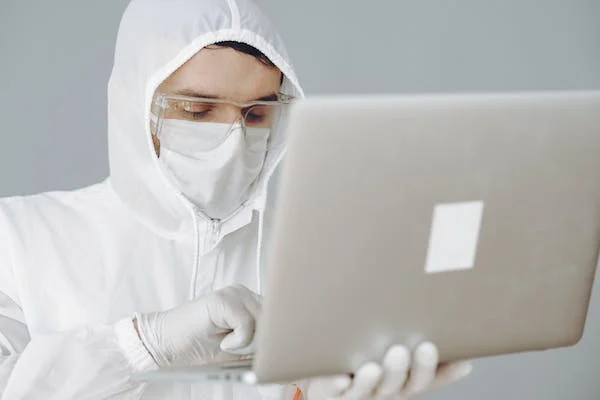Polychlorinated Biphenyls (PCBs) have long been recognized as environmental pollutants with adverse effects on ecosystems and human health. These chemicals were widely used in various industrial applications, such as electrical equipment and hydraulic fluids, due to their chemical stability.
However, their persistence and toxicity led to a global ban or severe restrictions on their use. The legacy of PCB contamination poses a significant challenge, necessitating effective and sustainable methods for their remediation.
In response to this challenge, emerging technologies in their management have taken center stage. These technologies offer a sustainable approach to managing and mitigating the environmental impact of these hazardous compounds.
This article explores the innovative solutions and advanced techniques revolutionizing PCB management.
What are PCBs?
They constitute a group of industrial chemicals produced in the United States from 1929 to 1979. They primarily served as insulating fluids in electrical equipment and as plasticizers in various products.
According to the United States Environmental Protection Agency (EPA), PCBs found extensive applications in industry, paints, plastics, and rubber. Persisting due to their robust nature, they are present in diverse sources such as fish, meat, poultry, dairy products, and breast milk. This makes them a significant dietary exposure pathway.
Exposure occurs not only through breastfeeding but also prenatally as these chemicals transfer from mother to fetus. Recent findings highlight additional exposure pathways, including indoor dust and air. This emphasizes the pervasive nature of PCBs and the imperative for innovative, sustainable approaches to their remediation.
Health Effects of PCB Exposure
The extensive study of PCB exposure symptoms has been pivotal in banning their manufacturing in 1979. This ban was prompted by compelling evidence of diverse health implications.
Individuals exposed to substantial amounts of these chemicals may manifest skin conditions like acne and rashes, with severe cases leading to coma and death. PCB-related health effects vary based on the duration of exposure. It encompasses irritation, respiratory tract symptoms, developmental issues, and liver and gastrointestinal effects.
Additionally, neurobehavioral changes, immunological alterations, and an increased risk of cancer are also associated with the exposure.
TorHoerman Law notes that the latency period of these cancer-causing chemicals, which accumulate in the body, remains not fully understood. Notably, their exposure has been linked to various forms of cancer, underscoring the importance of addressing the impact of these hazardous substances.
New Technology for PCB Disposal
Scientists have proposed an innovative two-step approach for the safe and efficient disposal of these compounds. According to Eurek Alert, the conventional method for eliminating it involves incineration. But this requires high temperatures and specific conditions to prevent the formation of dioxins and furans, hazardous byproducts of incomplete combustion.
The new two-stage method offers an environmentally safe alternative that can be implemented using existing disposal facilities. This method eliminates the need for specialized high-tech capacities.
The first step involves chemical functionalization, wherein chlorine atoms in the original PCB structures are replaced with hydroxyl groups (OH). This reduces the chlorine content in the substance, making combustion more efficient and less dependent on extreme temperatures.
The second step is the incineration of the chemically processed PCBs at lower temperatures, specifically in the range of 600-700°C. This temperature is well within the capabilities of existing waste incineration plants, bypassing the need for constructing specialized facilities.
The end products of this thermal destruction are benign mineral substances, including water, carbon dioxide, and hydrochloric acid, posing no direct danger to humans. Crucially, the proposed method avoids the formation of dioxins and furans in the final products, ensuring a safer approach to disposal.
Guidelines for Safe PCB Handling
Recycling these chemicals is a critical endeavor, given the lingering presence of old e-waste. A National Institutes of Health-funded study identified a crucial gap in safe-handling recommendations for recycling e-waste containing PCBs.
According to E-Scrap News, their comprehensive review of existing literature revealed an absence of tailored guidelines for secure e-waste recycling.
The study generated best practice guidelines to ensure the safe handling of PCB-containing electronic waste during recycling processes. These guidelines, derived from current research aim to inform and educate electronics recycling workers and facility owners.
The initiative seeks to enhance awareness of PCB waste identification, associated hazards, and safety measures. As old e-waste continues to pose risks, these tailored guidelines serve as a crucial resource.
Challenges and Future Directions
While emerging PCB management technologies hold immense promise, several challenges need to be addressed to ensure their widespread adoption and effective implementation. Scaling up these technologies from lab-scale to commercial-scale operations is crucial to demonstrate their feasibility and cost-effectiveness in real-world scenarios.
This requires significant investment in research and development, as well as collaboration between industry partners and regulatory bodies.
In addition to technological advancements, updating regulations and policies to align with the capabilities of emerging technologies is essential. This involves streamlining permitting processes and providing incentives for adopting these technologies.
A clear and supportive regulatory framework will encourage businesses to embrace these technologies and contribute to a more sustainable future.
Conclusion
The landscape of managing these chemicals is undergoing a transformative shift with the emergence of innovative technologies. These advancements herald a promising era in which sustainability takes precedence over conventional methods.
As these technologies progress and mature, they bring with them the potential to revolutionize the treatment of PCB waste. The strides made in managing these compounds address the hazardous legacy of these substances and contribute to broader environmental initiatives.
With ongoing research, these technologies stand poised to play a pivotal role in reshaping the future of PCB waste management. They offer a beacon of hope for a more environmentally friendly and sustainable approach to handling these complex materials.

